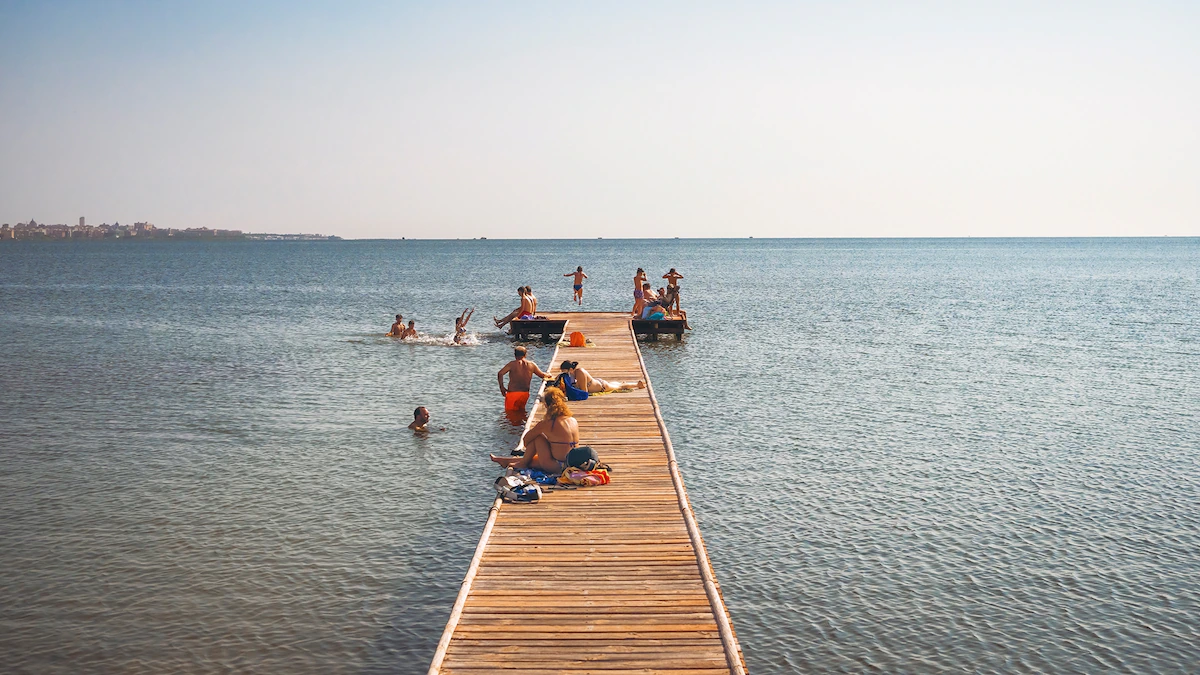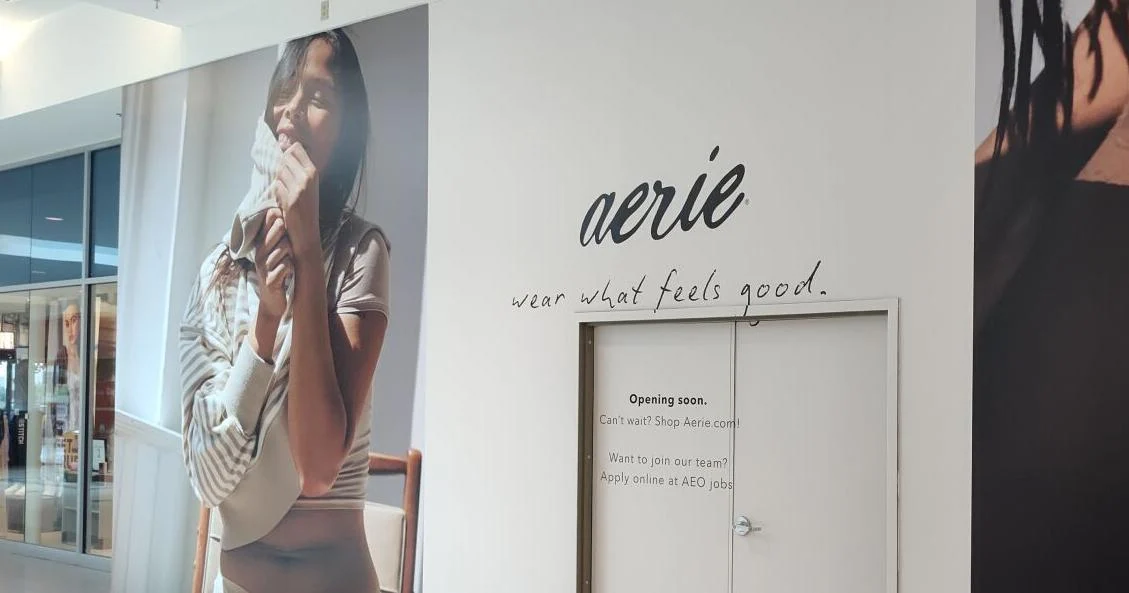Copyright National Geographic

Dust swirls in a quiet kasbah, stirred by the sirocco — the desert wind that carries soft Saharan sand across the Mediterranean Sea, its red grains falling in a blood rain. In the fortified central quarter, a shutter is brightly painted with the hamsa, the symbol of an open palm inset with a blue iris, believed across North Africa to deter the evil eye. A woman in a slate-grey headscarf and abaya robe-dress sweeps past, offering a shy ‘salam’. The crimson crescent moon and star of the Tunisian flag flaps in the breeze above a powder-blue door, standing tantalisingly ajar. It feels for all the world that we’re in a North African medina, not the western Sicilian coastal town of Mazara del Vallo. But then, as local guide Paolo Ayed is quick to remind me, “Sicily is the gate of Europe.” He gestures beyond the half-open door, where women stir vats of fish broth, vegetables and couscous — that Maghrebi staple that’s been absorbed, like so much from across the sea, into Sicilian culture. “I’m half Sicilian and half Tunisian,” Paolo says, his eyes electric-blue, his face olive-skinned. “And the fragrance of our kitchens is the same.” His tours are all about the interplay between the Tunisian and Sicilian communities in his hometown. Mazara del Vallo, 55 miles south west of Palermo, is home to Italy’s biggest Tunisian community, which makes up around 4,000 of the town’s population of 50,000. Most arrived after the 1960s, when a population boom caused high unemployment in Tunisia, with a solution provided by labour shortages in Sicily’s fishing industry. But this was just the latest wave in a history of immigration from North Africa that goes back to the 9th century CE, when a Tunisian-led army invaded Sicily, turning it into an Islamic emirate for the next 200 years. Mazara’s kasbah was built then, and it was later sacked by subsequent Christian rulers. Today, it’s been restored and is once again home to a majority Tunisian population. The conversation around modern-day multiculturalism in Sicily is often defined by the island’s position at the vanguard of the modern European migrant crisis, with many refugees from across Africa and beyond finding their first landfall here due to its position in the heart of the Mediterranean. But immigration is not a footnote to Sicilian history; it’s part of the essence of an island shaped by outsiders, from Phoenicians and Greeks to Vandals and Normans. We walk through the kasbah, where Paolo grew up in the 1980s. The walls are decorated with colourful ceramics depicting scenes from the Islamic conquest of Sicily, alongside the winged head of Medusa that adorns the Sicilian flag. We peer through the wooden shutters of a squat building into a bright white room, its floor laid out with neat rows of prayer mats and its walls adorned with Arabic calligraphy. This is Mazara’s modern mosque — the original having been destroyed to make way for the town’s cathedral. Today’s mosque sits side-by-side with the Church of San Francesco, a looming Baroque edifice of pale sandstone. “There aren’t many places where you can hear church bells and the call to prayer at the same time,” says Paolo, beaming. “Not competitors. Friends.” I bid farewell to Paolo and climb into my rental car. I’m embarking on a road trip to discover more about Sicily’s multicultural heritage, heading eastwards into the interior before finishing in the capital, Palermo, on the northwest coast, where the island’s cultural patchwork is at its most vivid. It’s a warm, sunny June day, but Sicily is greener than one might expect for such a dry place, where the mercury regularly rises to 35C in the summer months. As the countryside flits past my window, it seems full of life: silvery olive groves shimmer like shoals of fish, and vineyards erupt in verdant terraces on the hillsides. This greenness is thanks in large part to Sicily’s medieval Muslim rulers, who irrigated the island using aquifers and underground channels called qanats, transforming its agricultural potential. Just under an hour’s drive later, I reach Al Ciliegio, a farmhouse on the outskirts of the town of Salemi. Once used as a mafia hideaway, it was seized by the government in the early 2000s and is now a restaurant and agrotourism business run by the San Vito Onlus Foundation, a local enterprise helping to settle immigrants from North Africa. I’m ushered into the restaurant’s dining room, which overlooks its vineyard, and am seated at a communal table with a dozen other diners. A succession of plates is served that reflect the age-old multicultural influences on Sicilian cuisine, including pasta alla norma, one of Sicily’s national dishes, made with tomato, basil and aubergine, a vegetable brought to the island by the conquering Islamic armies in the 9th century. Next there’s couscous, prepared with seafood in the Tunisian style, the blue crabs laid on top of the piled grains as if they’re crawling on dunes of sand — but given a Sicilian twist, with the addition of garlic, parsley and spicy peperoncino peppers. After lunch, over cups of sweetened mint tea, I get talking to Amna Said, a smiling woman wearing round glasses and a blue hijab, who’s been a regular visitor since arriving in Sicily from Tunisia in the mid-2010s. “My husband would go away for three months at a time fishing, so I’d walk here to the foundation,” she tells me. “They helped me learn Italian and taught me to sew. It gave me another life.” This is not a one-way street, however, but a dialogue. “We share our skills with our teachers, too — how we prepare our tea, how to cook baklava,” Amna says. “It goes both ways.” The double-headed eagle Later that day I begin the drive north east, towards the Sicilian capital of Palermo. But first, I’m making a stop at one of the most distinctive towns on the island. From the outside, Piana degli Albanesi — an hour’s drive east of Salemi — appears like a perfect Italian scene: a medieval town of red-roofed buildings clustered beside a cerulean lake, fringed with forest and hemmed in by a ring of mountains. But I have an uncanny feeling, as I wind along the mountain roads towards the town, that something’s different. The road signs have grown longer, and now feature Balkan-sounding translations beneath the Italian names. Corleone becomes Kurjuni, Palermo becomes Palerma, and my destination, Piana degli Albanesi, becomes Hora e Arbëreshëvet — which translates, literally, to the City of the Albanians. I pull up beside the town’s main square, where the double-headed eagle flag of Albania flaps from balconies and huge, colourful murals are splashed on the side of buildings, honouring the town’s cultural heritage. There’s a painting of a woman in traditional dress, a white blouse and a royal red tunic, brocaded with gold. Piana degli Albanesi was founded in the late 1400s by Albanian Orthodox Christians, fleeing persecution by the Ottoman Empire in their homeland. The majority of the town’s 5,500 inhabitants today are of Albanian descent, and speak the language I’d seen on the road signs — not modern Albanian but Arbëreshë, a diaspora dialect that’s similar to the medieval language of the settlers, combining elements of Albanian and Ancient Greek. This contrasts with the rest of the island, where close to four million people — more than 70% of Sicily’s population — speak the Sicilian language, which is influenced by Arabic. The traditional Sicilian greeting ‘sabbinirica’, for instance, derives from the Arabic ‘salam alaikum’. There are around 100,000 Arbëreshë scattered across Italy. Perhaps one third of that number live in Sicily, and Piana degli Albanesi has the island’s largest Arbëreshë community. There’s a saying in Sicily that illustrates its detachment from the mainland in matters of national identity. “I’m Italian by birth,” you may hear somebody say, “but Sicilian by the grace of God.” In Piana degli Albanesi, there’s another layer. “We’re Arbëreshë first, then Sicilian, then Italian,” says dark-haired tour guide Francesca Incao when I meet her in the town square later. She was born and raised in Piana degli Albanesi. This town is famous not just for its language, but also its food. Classic local dishes that reflect the eastern origins of the Arbëreshë include cuccìa, a Byzantine-origin porridge of boiled wheatberries and sugar; and bukë, a round bread cooked in a tandoor oven. Still full from lunch, I’m not sure I can stretch to the local signature dish — bucatini pasta with salted sardines and the wild fennel that sways in the fields, making the air here fragrant with anise all summer. But I haven’t yet had dessert, so I gladly accept Francesca’s suggestion of a cannolo, the archetypal Sicilian pastry, in a town square cafe. The Albanian flag sways on a flagpole nearby, above old men playing dominoes in the shade of a plane tree. The origins of cannoli, the international icon of Sicilian cuisine, are disputed. Some say that Piana degli Albanesi is the home of the sweet treat. Yet some historians believe the roots of the dish go back to the days of the Arab rulers, who brought with them a penchant for pastries, candied fruit and pistachios. This is just one of several Sicilian foods influenced by migration from the Islamic world. Ice cream, for instance, arrived courtesy of Sicily’s Muslim rulers, who flavoured the snow of Mount Etna with sweetened fruit juice, mimicking the frozen sorbets of ancient Persia. To this day, caves called neviere, designed for storing snow to make frozen desserts throughout the year, can be visited on Sicily’s high hills, such as Monte Lauro in the south east of the island. My cannolo arrives, and I do a double take — it’s the size of a child’s arm. Francesca smiles and nods encouragingly, explaining that their great size — as well as the addition of wine to the pastry mix — are characteristic of the local recipe. An earlier cautionary comment, made to me by the waiter at lunch, when the vast plates of couscous had been heaved onto the table, echoes through my mind: “Sicilians will try to kill you with food.” Born from music Bidding farewell to Francesca and this Albanian exclave, I make the final hour’s drive to Palermo, which has traded and hustled and sweated beside the Tyrrhenian Sea for more than 2,700 years. The sun is beginning to set as I wind through the streets of the Old Town, and the city is glowing like coal. As the heat of the day fades, life begins to flood in. As recently as a decade ago, Palermo’s mafia activity made the city so dangerous after dark that the streets were largely deserted by 8pm. Now, thanks to the work of anti-mafia former mayor Leoluca Orlando, it’s a much safer place, and the evenings are when the city feels at its most Italian. Walking through the streets of the Albergheria, the oldest district of the city centre, I’m soon joined by smartly dressed couples on their passeggiata, that time-honoured Italian tradition of dressing up and going for an evening stroll. In the piazzas, children kick footballs while wearing the black-and-pink of Palermo FC; the sound of music carries on the warm breeze from the open windows of restaurants and bars. One such establishment is Moltivolti, a restaurant, music venue and social enterprise in Albergheria dedicated to cultural exchange. Wooden boards painted with waves swing on motors back and forth from the ceiling, depicting the rough sea passage of migrant boats. A huge map is pinned with red threads, showing patterns of human movement towards Sicily over the centuries. “Everything we do is geared towards fostering diversity,” says co-founder Giovanni Zinna, a gesticulatory man with glasses and a beard. Since its opening in 2014, Moltivolti has become a hub for migrants from all over the world, but particularly from Senegal, Mali and Ghana. It works by helping them settle, giving them jobs, serving their cuisines and playing their music in the restaurant. The place is packed tonight — a healthy mixture of locals and travellers — and on the menu is mafe, a Senegalese peanut and lamb stew that fills the air with its sweet, earthy aroma. On stage this evening are the Doudou Group, a Senegalese-Sicilian four-piece band led by the charismatic singer-guitarist Doudou Diouf. Dressed in a striped, colourful garment with a belt and headdress decorated with cowrie shells, Doudou barrels through an energetic set of songs that combine the syncopated rhythms, bouncing basslines and slinky guitar patterns of Senegalese and Malian folk music. Much Messina beer is consumed by the crowd, and soon enough most of them are on their feet, Doudou dancing among them, a huge grin on his face. When the set finishes, I strike up a conversation with him at the bar. He tells me he initially came to Sicily from Senegal 13 years ago on tour, settling here after falling in love with a woman in the crowd at one of his concerts in Catania. In addition to his work as a musician, he now runs Ciwara, another Palermo restaurant that, like Moltivolti, helps migrants settle and find work, and is also a venue for African musicians. “We encountered some racial prejudice at first, but music and art bring people together,” he says. “When people share a stage, links are born — African-Sicilian relationships, marriages, new families born from the music.” Culinary adventures The next morning, I’m feeling worse for wear, the revelry of Moltivolti transitioning into a creeping hangover. I’m hoping it will be cured by the salty morsels on offer at La Vucciria, a historic 9th-century market nearby where I’ve booked a street food tour. “It’s only 10am,” I protest when tour guide Cettina Spotto, an elegantly dressed Palermo local, approaches our table with two huge glasses of Grillo, the archetypal Sicilian white wine. “That’s why we need a little snack,” she says. Cettina leads me around the small market square, between tent-covered stalls with sizzling metal grills. The snacks in question do not immediately stoke my appetite, though they prove to be delicious. First up is pani câ meusa — cow spleen sandwich — a dish that originated with Palermo’s Jewish butchers around 1000 CE and is now a classic Palermo street food. It doesn’t look like much — slices of grey meat stuffed inside a sliced roll — but it’s rich, slightly sweet and less rubbery than I feared. Following this is stigghiola — grilled lamb’s intestines — which are chewier, but no less delicious, and lent a herbiness by the addition of parsley, their fattiness cut through by a squeeze of lemon. It’s an enjoyable culinary adventure, but I’m nonetheless relieved to finish on a more familiar note: arancini, deep-fried rice balls whose crunchy shells collapse to unleash a flood of rich ragù and stringy mozzarella. Arancini are another dish believed to have its origins in Sicily’s Arab-ruled era, and another example of how the island’s multifaceted past is written in its food. The Phoenicians brought the fig, the Spanish the prickly pear, the Greeks olives and wine — all now mainstays of Sicilian cuisine. “Sicily has one of the world’s first fusion cuisines,” says Cettina. “It’s reflected in the people, too. A lot of Sicilians are blonde with blue eyes, because of the Normans. I’m a little bit Jewish, a little bit Arab, a little bit Phoenician. And all Sicilian.” We leave the market and walk down the Cassaro, a long thoroughfare lined with cafes that is one of the oldest streets in the city. We pass street signs in Hebrew and Arabic, in honour of the Muslims and Jews who were once the majority population in this part of the city. Palermo was home to 200 mosques, but these were all destroyed after the Normans conquered the island in the 11th century. The entire medieval Jewish population, meanwhile, was expelled by the Inquisition when Sicily was ruled by the Spanish in 1493. We pause outside Palermo’s palm-framed cathedral, perhaps the city’s most magnificent monument to Sicily’s past. Formerly the site of a Byzantine basilica, and then a mosque, the cathedral was built by the Normans in the 12th century, but using local Arab builders and architectural techniques — a fusion style found across Sicily known as Arab-Norman, featuring pointed arches, Islamic geometric patterns and honeycomb-like muqarnas vaults. There’s even a Qur’anic verse etched into one of the cathedral’s outer columns. It’s a feeling of co-option and adaptation, of cultures feeding and folding into one another over chapters of history, which one finds throughout Sicily. “In many places, people say, ‘You’re different — go away!’” says Cettina. “In Sicily, we say, ‘You’re different. What can we learn from you?’”



